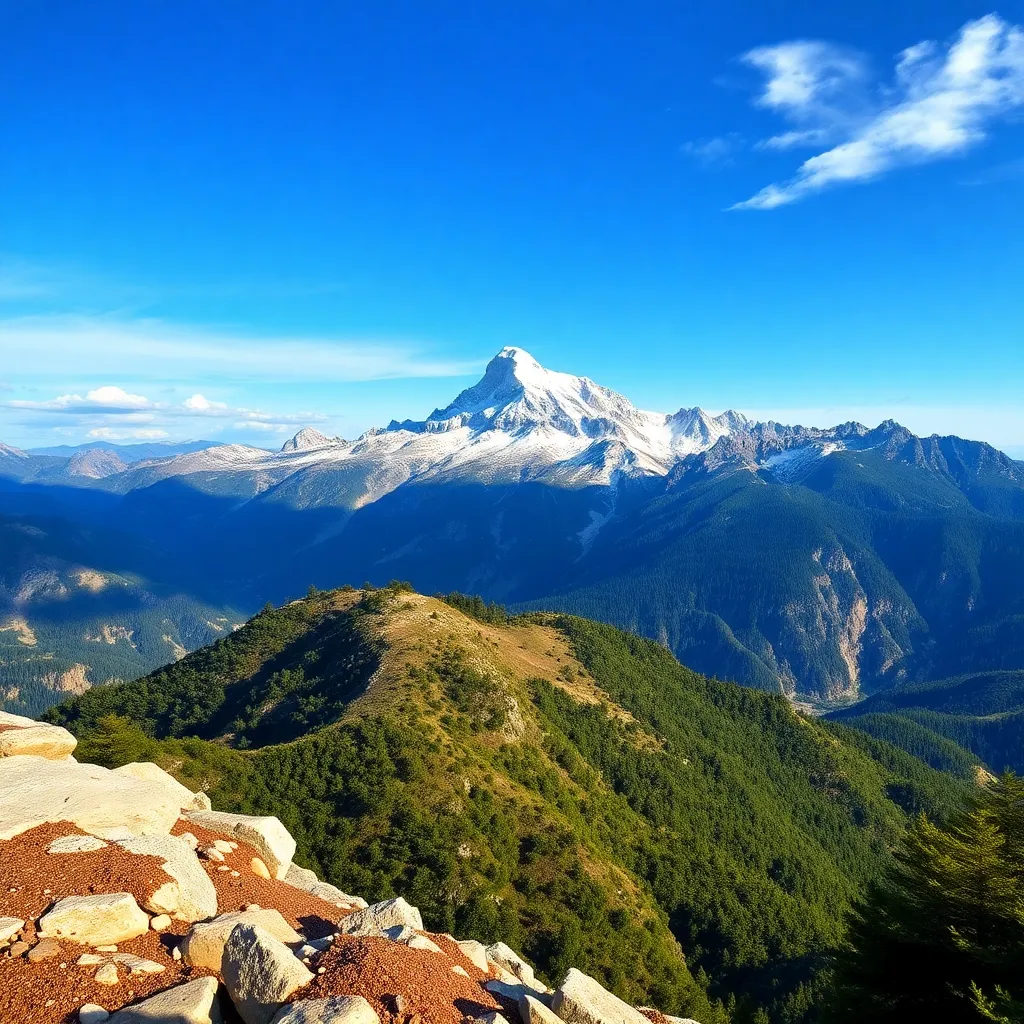The Geography of Mount Olympus: A Natural Wonder in Greece
I. Introduction
Mount Olympus, the highest mountain in Greece, rises majestically above the surrounding landscape, reaching an elevation of 2,917 meters (9,570 feet). It is not only a stunning natural wonder but also holds a significant place in Greek mythology and culture. Known as the home of the gods, Olympus is steeped in stories and legends that have shaped the ancient Greek worldview. This article aims to explore the geography of Mount Olympus, its significance, and the myriad of natural features that contribute to its allure.
II. Location and Accessibility
Mount Olympus is located in northern Greece, situated between the regions of Thessaly and Macedonia. Its geographic coordinates are approximately 40.0855° N latitude and 22.3569° E longitude. This prime location makes it easily accessible from several major cities:
- Thessaloniki: About 80 kilometers (50 miles) to the north.
- Athens: Approximately 500 kilometers (310 miles) to the south.
- Larissa: Roughly 50 kilometers (31 miles) to the west.
Visitors can reach Mount Olympus by car or public transport, with buses running regularly from Thessaloniki and other nearby cities. The most common entry point for hikers is the village of Litochoro, which serves as a gateway to the mountain.
III. Geological Features
Mount Olympus is a geological marvel formed from a complex mix of sedimentary and metamorphic rocks. Its unique formation is a result of tectonic activity that has shaped the landscape over millions of years. The mountain consists of numerous peaks, with the following notable summits:
- Mytikas: The highest peak at 2,917 meters, often regarded as the throne of the gods.
- Skala: The second highest at 2,882 meters, known for its steep faces and rugged terrain.
- Skolio: Standing at 2,911 meters, it is a popular climbing destination.
The mountain also features unique geological formations, including:
- Fjords created by glacial activity.
- Impressive cliffs and gorges that showcase its rugged beauty.
- Diverse rock types such as limestone, marble, and schist.
IV. Climate and Weather Patterns
Mount Olympus experiences a diverse climate characterized by varying altitudinal zones. The lower regions are typically Mediterranean, while higher elevations transition into a more alpine environment. Key climate characteristics include:
- Temperature: Summers are warm, while winters can be harsh with heavy snowfall.
- Precipitation: The mountain receives significant rainfall, particularly in the autumn and spring.
- Snow Cover: Snow can last well into the summer at higher altitudes, affecting accessibility and hiking conditions.
These climatic variations greatly influence the flora and fauna found on the mountain, creating distinct habitats for numerous species.
V. Flora and Fauna
Mount Olympus is a biodiversity hotspot, home to over 1,700 species of plants and a variety of wildlife. The ecological significance of the area is underscored by its status as a national park, which aims to protect its unique ecosystems. Key aspects include:
- Biodiversity: The mountain hosts a mix of Mediterranean and alpine vegetation, including forests of fir, pine, and beech trees.
- Endemic Species: Several plant species are endemic to Mount Olympus, contributing to its ecological uniqueness.
- Wildlife: The area is inhabited by various animals, including the Balkan chamois, golden eagles, and numerous species of butterflies.
Conservation efforts are ongoing to protect these natural treasures, with protected areas established to safeguard the mountain’s biodiversity.
VI. Hiking and Outdoor Activities
Mount Olympus offers a range of outdoor activities, making it a popular destination for adventure enthusiasts. The mountain is crisscrossed with numerous trails, providing opportunities for both casual walkers and experienced hikers. Some notable trails include:
- Prionia to Refuge A: A well-marked trail leading to one of the most popular hiking refuges.
- Mythical Trail: A more challenging route that takes hikers through stunning landscapes and ancient myths.
- Summit Route to Mytikas: A demanding climb for experienced hikers seeking to reach the peak.
In addition to hiking, visitors can enjoy activities such as rock climbing, bird watching, and photography. Here are some tips for adventurers:
- Always check the weather forecast before setting out.
- Wear appropriate hiking gear and carry sufficient water and snacks.
- Consider hiring a guide if you are unfamiliar with the terrain.
VII. Cultural and Historical Significance
Mount Olympus is not only a natural wonder but also a site of immense cultural and historical significance. Its connection to ancient Greek mythology is profound, with the mountain considered the dwelling place of the gods, including Zeus, Hera, and Apollo. This mythological aspect has inspired countless stories, art, and literature throughout the ages:
- Mythological Narratives: Many Greek myths revolve around the deities of Olympus, influencing the cultural fabric of ancient Greece.
- Archaeological Sites: The region surrounding Mount Olympus contains several ancient ruins and historical landmarks that reflect its rich heritage.
- Influence on Art and Literature: Artists and writers have drawn inspiration from the mountain for centuries, embedding it within the cultural consciousness.
VIII. Conclusion
In conclusion, Mount Olympus stands as a testament to Greece’s natural beauty and cultural richness. Its diverse geography, unique biodiversity, and deep-rooted mythological significance make it a site worthy of exploration and appreciation. As we recognize the importance of preserving its landscapes and ecosystems, we encourage all to experience the wonders of Mount Olympus firsthand, whether through hiking its trails, uncovering its myths, or simply enjoying the breathtaking views it offers.




